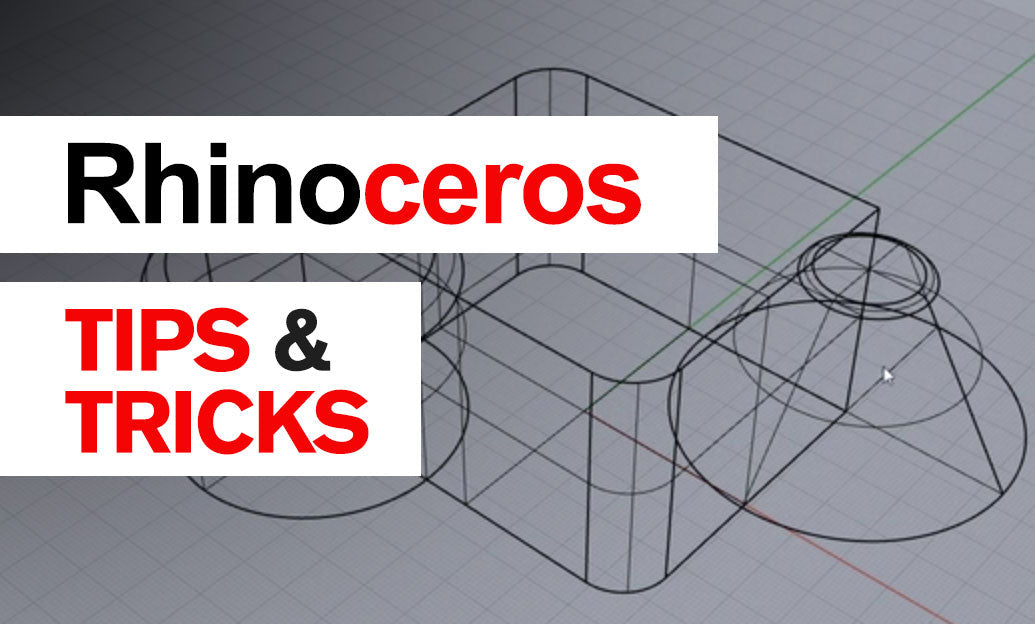Your Cart is Empty
Customer Testimonials
-
"Great customer service. The folks at Novedge were super helpful in navigating a somewhat complicated order including software upgrades and serial numbers in various stages of inactivity. They were friendly and helpful throughout the process.."
Ruben Ruckmark
"Quick & very helpful. We have been using Novedge for years and are very happy with their quick service when we need to make a purchase and excellent support resolving any issues."
Will Woodson
"Scott is the best. He reminds me about subscriptions dates, guides me in the correct direction for updates. He always responds promptly to me. He is literally the reason I continue to work with Novedge and will do so in the future."
Edward Mchugh
"Calvin Lok is “the man”. After my purchase of Sketchup 2021, he called me and provided step-by-step instructions to ease me through difficulties I was having with the setup of my new software."
Mike Borzage
Rhino 3D Tip: Troubleshooting Common Rhino 3D Modeling Challenges for Enhanced Workflow Efficiency
October 09, 2024 2 min read

In the intricate world of 3D modeling, even the most seasoned designers encounter occasional hurdles. Rhino 3D, known for its robust and versatile toolset, is no exception. While it’s a powerful ally for complex designs, you might sometimes face common modeling issues that can disrupt your workflow. Here are some troubleshooting tips to help streamline your Rhino 3D experience and maintain creativity without interruption.
Common Modeling Issues and Solutions
-
Problem: Unexpected Display Anomalies
- Solution: Ensure that your graphics drivers are up-to-date. Rhino relies heavily on your system’s GPU, and outdated drivers can lead to display glitches. It’s also advisable to check Rhino’s OpenGL settings for any adjustments that can enhance performance.
-
Problem: Slow Performance on Large Models
-
Solution: Utilize
Worksessionto manage large files effectively. This feature allows you to link multiple models without merging them, reducing file size and improving performance. Additionally, consider purging unused layers and objects to streamline your project.
-
Solution: Utilize
-
Problem: Boolean Operations Failing
-
Solution: Boolean failures often occur due to overlapping or non-intersecting geometry. Use the
Intersectcommand to check for potential issues and correct them before reattempting the operation. Also, ensure that all objects involved are closed polysurfaces.
-
Solution: Boolean failures often occur due to overlapping or non-intersecting geometry. Use the
-
Problem: Problems with Display Modes
- Solution: If visual feedback in display modes is not as expected, resetting the display mode settings and adjusting the resolution of texture maps might help. Explore the customization options to tailor the display settings to your needs.
-
Problem: Surface and Edge Continuity Issues
-
Solution: Utilize the
MatchSrfandBlendSrfcommands to improve surface continuity and create smooth transitions between surfaces. Checking and refining edge tolerances can also help in achieving the desired smoothness.
-
Solution: Utilize the
By systematically addressing these issues, you can ensure a smoother and more efficient modeling process in Rhino. Don't forget that the Rhino community and resources such as the @NOVEDGE website offer extensive support and insights for both beginners and advanced users. Embrace these solutions to optimize your 3D modeling journey and bring your creative visions to life seamlessly.
You can find all the Rhino products on the NOVEDGE web site at this page.
Also in Design News

Cinema 4D Tip: Structured Content Browser Workflow for Cinema 4D Asset Management
January 07, 2026 2 min read
Read MoreSubscribe
Sign up to get the latest on sales, new releases and more …




